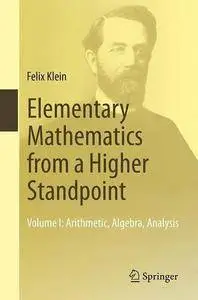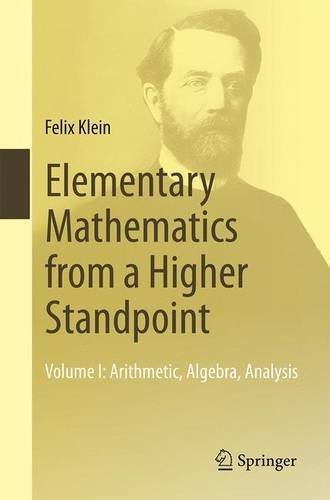Elementary Mathematics from a Higher Standpoint: Volume I: Arithmetic, Algebra, Analysis: 1 by Felix Klein
English | 8 July 2016 | ISBN: 366249440X | 312 Pages | PDF (True) | 4.45 MB
English | 8 July 2016 | ISBN: 366249440X | 312 Pages | PDF (True) | 4.45 MB
These three volumes constitute the first complete English translation of Felix Klein’s seminal series “Elementarmathematik vom höheren Standpunkte aus”. “Complete” has a twofold meaning here: First, there now exists a translation of volume III into English, while until today the only translation had been into Chinese. Second, the English versions of volume I and II had omitted several, even extended parts of the original, while we now present a complete revised translation into modern English.
The volumes, first published between 1902 and 1908, are lecture notes of courses that Klein offered to future mathematics teachers, realizing a new form of teacher training that remained valid and effective until today: Klein leads the students to gain a more comprehensive and methodological point of view on school mathematics. The volumes enable us to understand Klein’s far-reaching conception of elementarisation, of the “elementary from a higher standpoint”, in its implementation for school mathematics.
This volume I is devoted to what Klein calls the three big “A’s”: arithmetic, algebra and analysis. They are presented and discussed always together with a dimension of geometric interpretation and visualisation - given his epistemological viewpoint of mathematics being based in space intuition. A particularly revealing example for elementarisation is his chapter on the transcendence of e and p, where he succeeds in giving concise yet well accessible proofs for the transcendence of these two numbers. It is in this volume that Klein makes his famous statement about the double discontinuity between mathematics teaching at schools and at universities – it was his major aim to overcome this discontinuity.



